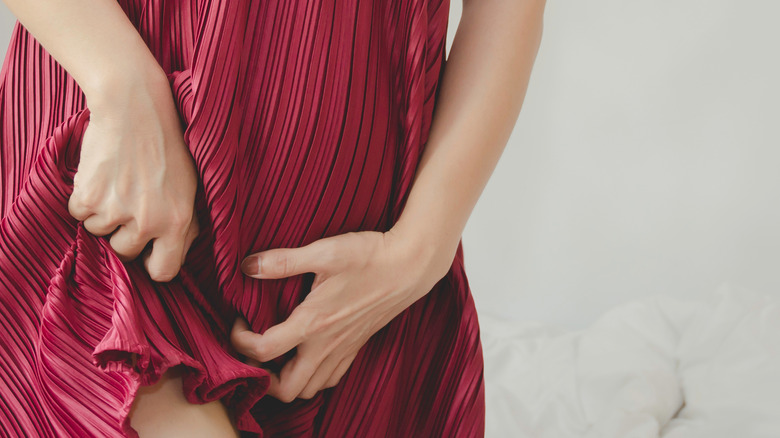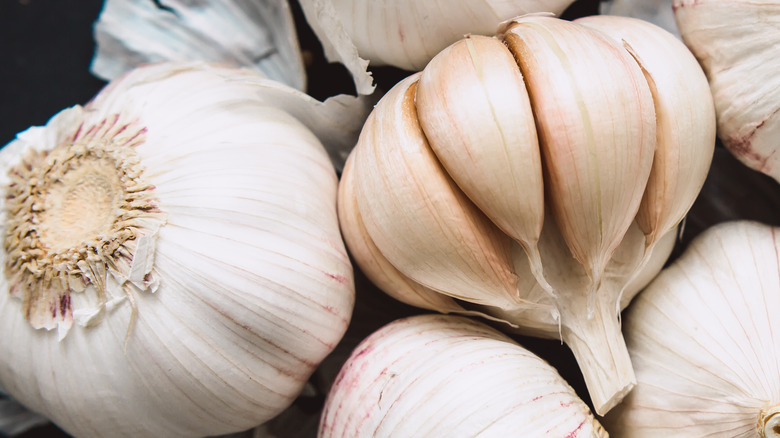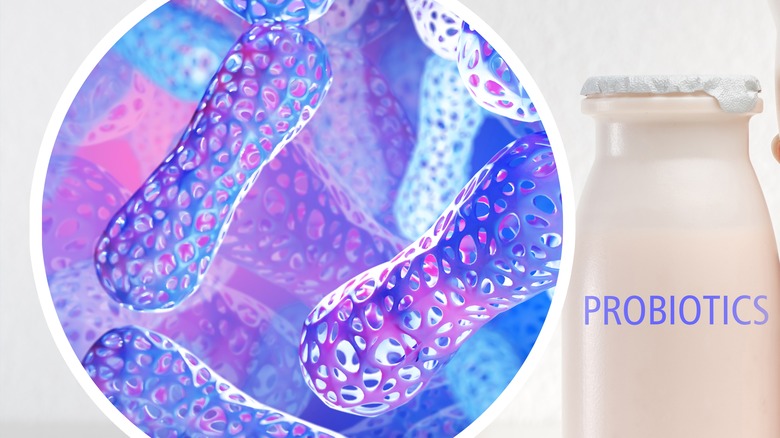Do Doctors Approve Of These Alternative Treatments For Yeast Infections?
When it comes to yeast infections, not everyone loves the idea of using Monistat or similar over-the-counter treatments. Because of this, people often look to home remedies. Not only are these remedies far cheaper, but they might already be in the house — like garlic, coconut oil, and yogurt. But the problem with these alternative treatments, even if some people swear by them, is that they usually don't work and can exacerbate the infection. There's also the issue of treating something that you may not even know is officially a yeast infection.
"The biggest issue is that self-diagnosis of yeast infections is not very accurate, especially if you haven't had one before," OB/GYN Dr. Kathryn Goebel tells Cleveland Medical Clinic, adding that allergic reactions and bacterial infections can result in the same symptoms.
Yeast infections are caused by the overgrowth of candida in the vagina and can pop up due to pregnancy, medication, or a weakened immune system (via Mayo Clinic). But the thing is, in order to get rid of a yeast infection, it needs to be properly medicated, meaning you shouldn't just toss whatever you find on Google into your vagina.
Here are alternative treatments for yeast infections that doctors would like you to skip — as well as those that are okay.
Alternative treatment no-nos
For some, tea tree oil is a go-to for yeast infections because it's a natural antibacterial product and is often used to treat fungal infections and other irritations on the body (via Healthline). While there are tea tree oil suppositories you can buy for yeast infections, you should never attempt to use them without first talking with your doctor as they could potentially pose a serious risk to your health. Furthermore, you should never ever use tea tree oil directly in or around your vagina. This can cause burns and irritation, among other issues.
When it comes to food-based solutions, inserting garlic or yogurt into the vagina seems to be among the most popular. But while garlic does have antifungal properties, there's no conclusive proof that it works (via GoodRx Health). Yogurt, too, doesn't have any proof that it works and because of the sugar in it, even the natural sugar, it could make the yeast infection worse (via Cleveland Clinic).
Boric acid suppositories have also been used by some as an at-home treatment. While it does work, it can be extremely irritating to the vagina, per Healthline. Because of this, boric acid is considered the second line of defense when all else has failed (via the Centers for Disease Control and Prevention). You should also talk to your doctor before using it — especially if you're pregnant.
What treatments are okay
According to Harvard Health, 75% of women will have a least one yeast infection in their lifetime, and 45% will have two or more. That's a lot of itching and scratching that can explain why people are so desperate to try anything they can get their hands on to remedy a yeast infection. But that doesn't mean that just anything is going to work.
"I am not an advocate of putting at-home remedies in your vagina," board-certified OB-GYN Dr. Pari Ghodsi tells Glamour. "It can throw off the pH balance further, irritate your vagina, and worsen an existing infection."
What it comes down to is being wise about your body and what you put into and onto it. Sure, coconut oil makes for a great hair conditioner, and eating yogurt is fantastic for gut health, but that doesn't mean these things — among other home remedies — are good for treating a yeast infection.
So, forget about going to the kitchen cabinet when you have a yeast infection. Heading to the pharmacy for an over-the-counter medication or calling your doctor for a prescription are far better choices. In other words, save the garlic for some homemade garlic bread instead.


